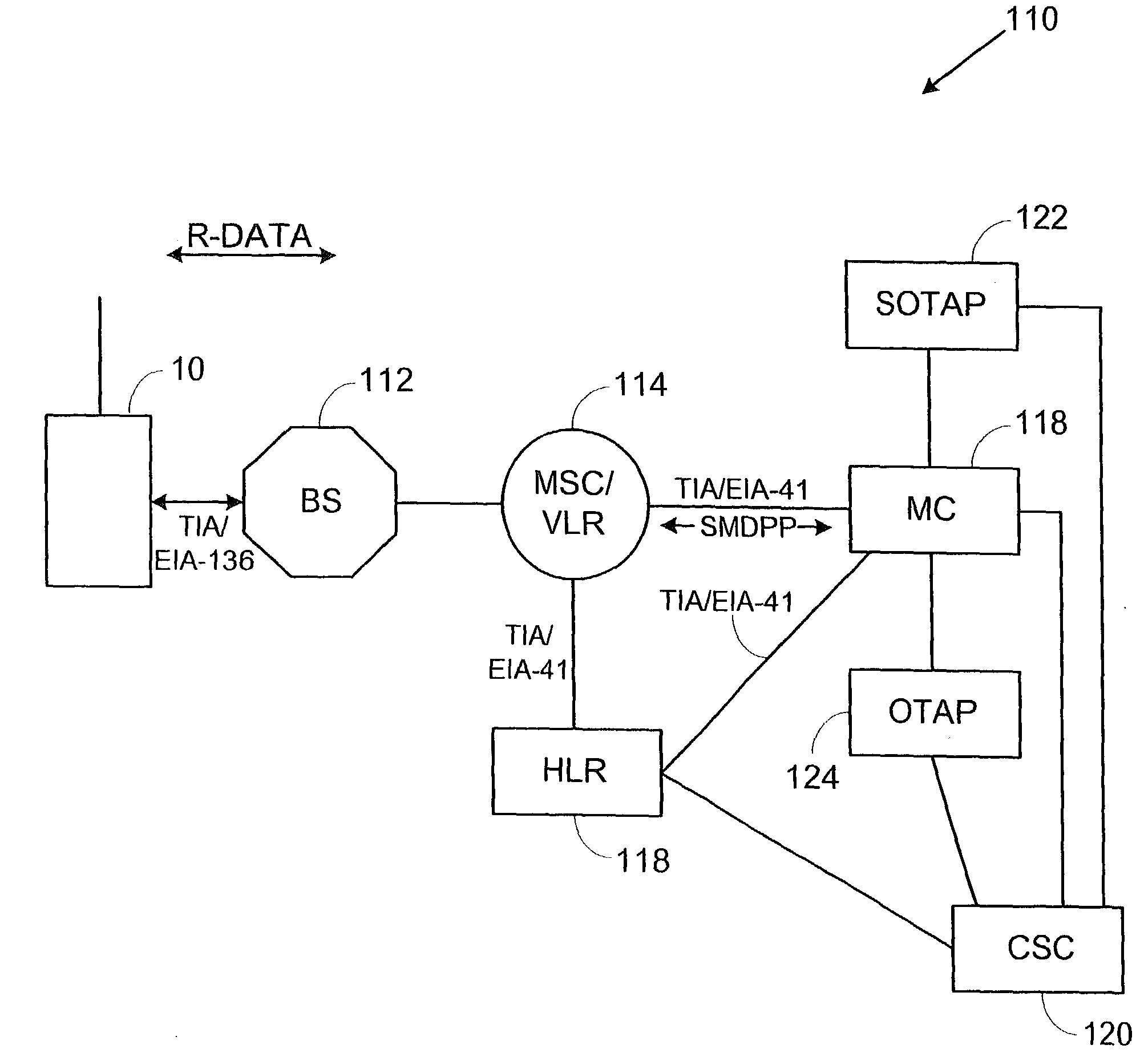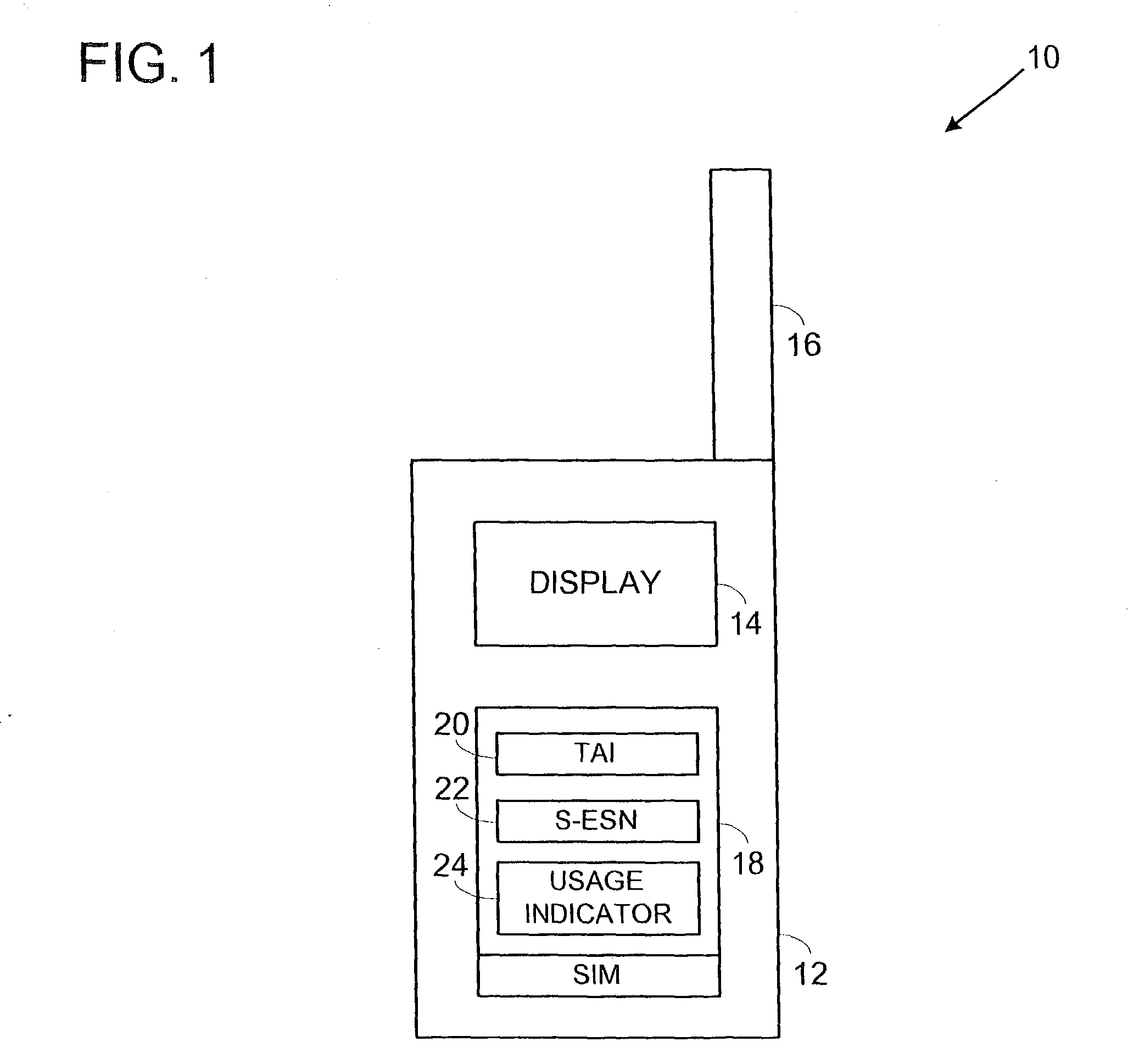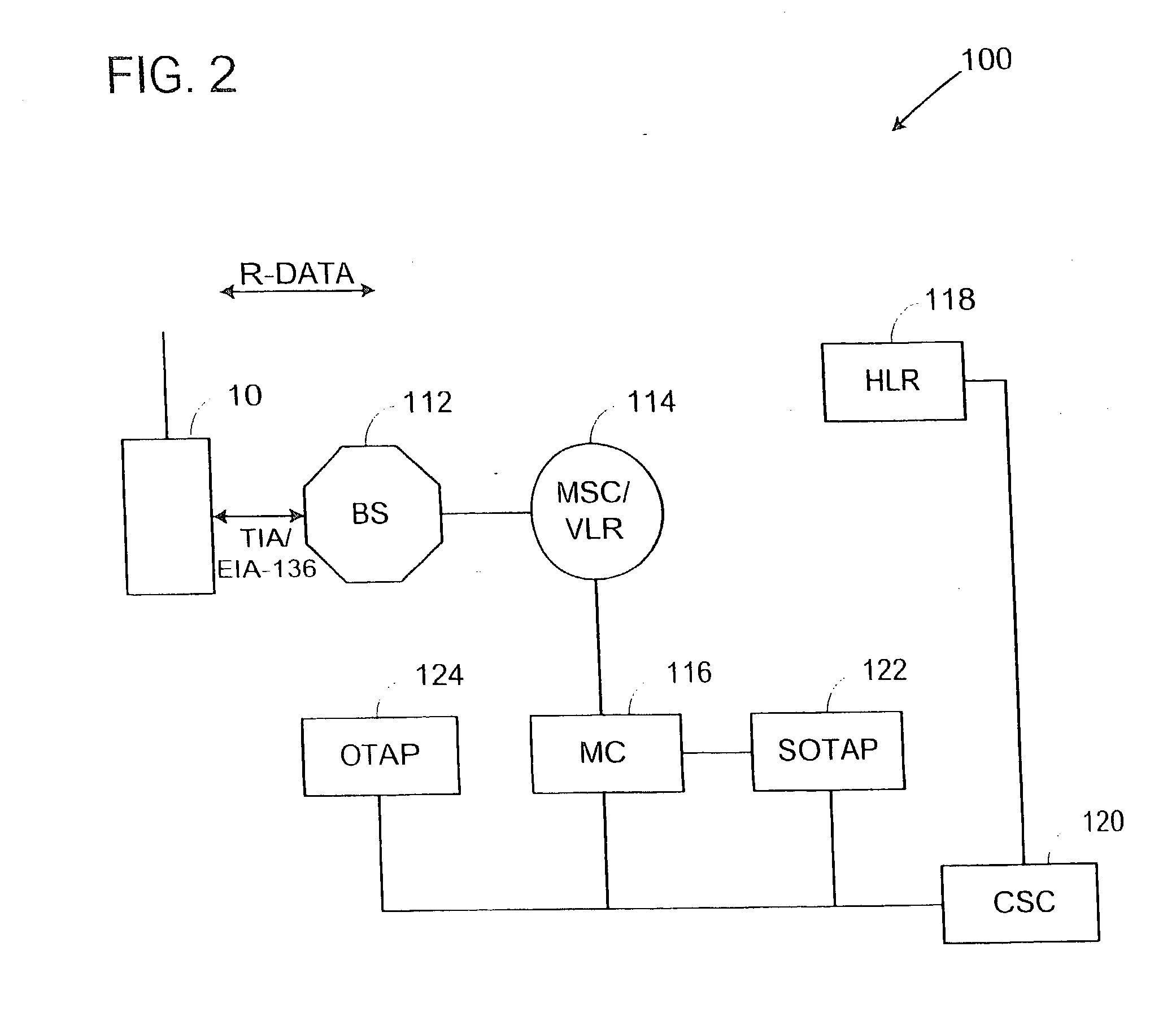System and method for using a temporary electronic serial number for over-the-air activation of a mobile device
- Summary
- Abstract
- Description
- Claims
- Application Information
AI Technical Summary
Benefits of technology
Problems solved by technology
Method used
Image
Examples
first embodiment
[0029]The SIM 18 is used to store subscriber-specific information, such as the international mobile station identity (IMSI) and an authentication key. The IMSI is comparable to the MIN used in the PCS network. According to the present invention, the SIM card 18 of the mobile device 10 is pre-programmed with a temporary activation identifier (TAI) 20. The TAI may be an IMSI and / or a MIN. The SIM card 18 is further pre-programmed with a SIM-electronic serial number (S-ESN) 22 that the PCS network can interpret or associate with the specific SIM card or SIM card vendor. The S-ESN is a temporary electronic serial number that is used in the registration and activation process. This S-ESN can also identify the SIM card to the PCS or second-generation network as requiring an initial over-the-air activation procedure.
[0030]In addition, the SNM card is pre-programmed with “ANSI-136 Usage Indicators”24. The Usage Indicators are 2-bit fields on the SIM that instruct the mobile device regarding...
third embodiment
[0046]the invention is illustrated by way of the example process shown in FIG. 4. According to this embodiment, a method is proposed for enabling activation of a SIM-based mobile device in a PCS wireless network. The method comprises programming (200) the removable card with a temporary activation identifier (TAI), a SIM electronic serial number (S-ESN) and a network usage indicator field, which is set to report the activation electronic serial number during registration. During registration of the mobile device with a PCS network, the mobile device transmits (202) the TAI and S-ESN as the SIM card identifier. The network identifies (204) the SIM based mobile device using the S-ESN associated with a removable card vendor. The authentication procedures may or may not be bypassed according to the present invention. Preferably, authentication is bypassed (206) to alleviate the network of the requirement of mapping secure authentication keys against the temporary identification informat...
fourth embodiment
[0049]the present invention is illustrated in FIG. 5, which shows an exemplary method of providing over-the-air activation of either a second-generation wireless device or a third-generation wireless device. The wireless device initiates the process by requesting (300) registration on the network using a temporary activation identifier (TAI). The network receives the TAI and creates (302) a temporary subscriber profile for OAA activation. The network inquires (304) whether the S-ESN was reported to determine whether the device is a second-generation device or third-generation device. If the S-ESN was not reported, the OTAP is notified (306) and the OAA is executed (308) for the second-generation mobile device. If the S-ESN was reported, then the process inquires (310) whether authentication should be bypassed. If authentication is not to be bypassed, then authentication is performed (312). If authentication is bypassed, then the process proceeds directly to notify (314) the correct ...
PUM
 Login to View More
Login to View More Abstract
Description
Claims
Application Information
 Login to View More
Login to View More - R&D
- Intellectual Property
- Life Sciences
- Materials
- Tech Scout
- Unparalleled Data Quality
- Higher Quality Content
- 60% Fewer Hallucinations
Browse by: Latest US Patents, China's latest patents, Technical Efficacy Thesaurus, Application Domain, Technology Topic, Popular Technical Reports.
© 2025 PatSnap. All rights reserved.Legal|Privacy policy|Modern Slavery Act Transparency Statement|Sitemap|About US| Contact US: help@patsnap.com



